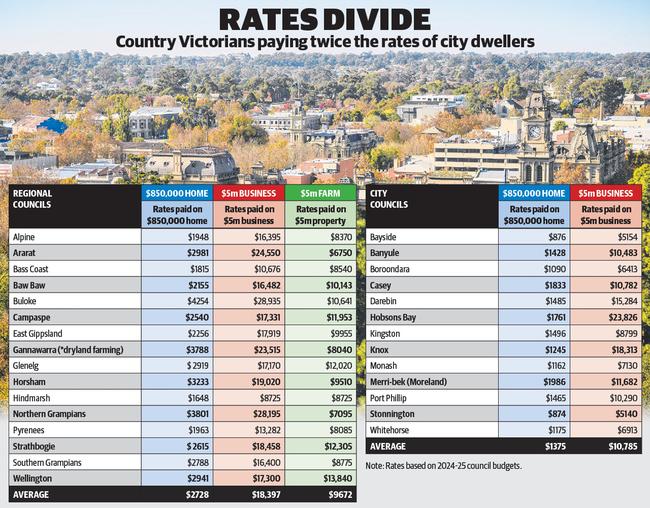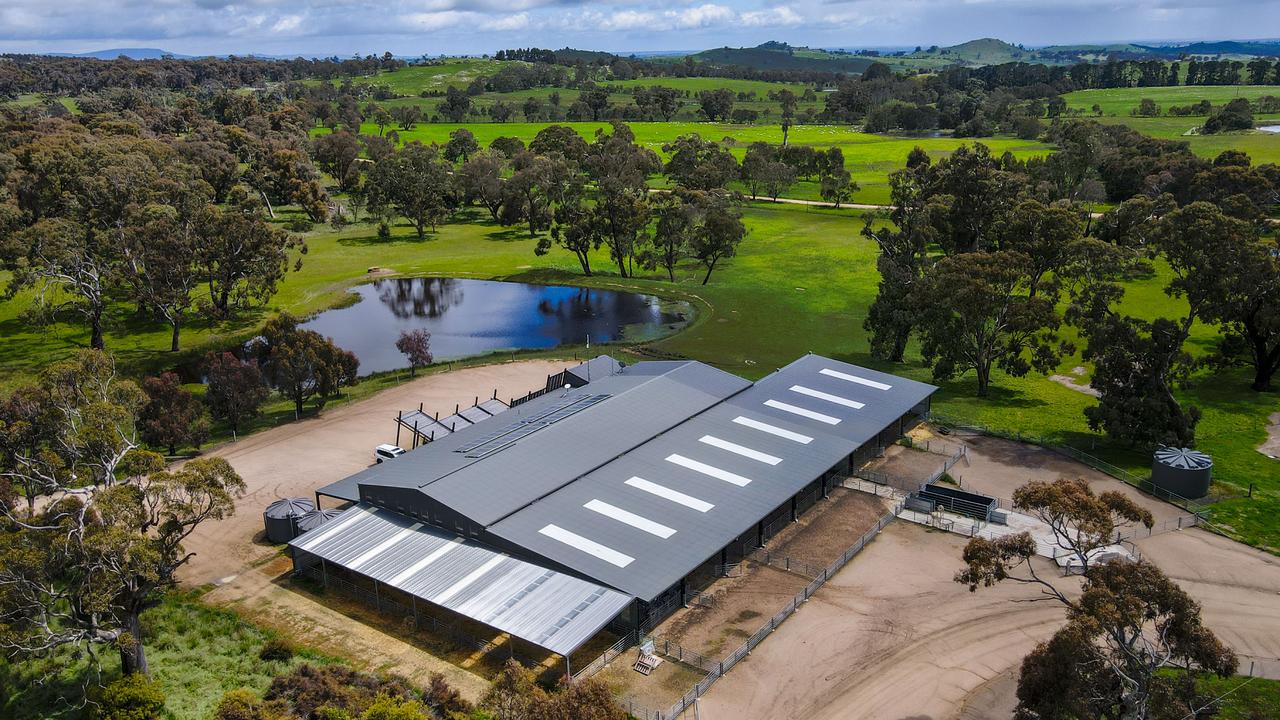Regional cost crisis: Paying more for power, water, rates and freight
An analysis of rates across 29 shires in Victoria shows how much more those in the country are coughing up to their councils.

Rates, water, electricity, freight and even firewood prices are soaring in regional Victoria, leaving country communities far worse off than those in the city.
Regional Victorian households and businesses are paying more than twice as much in rates as their city counterparts with properties of the same value, 21 per cent more for water and up to 30 per cent more for electricity.
An analysis of rates across 29 shires shows the owner of an $850,000 home in metropolitan Melbourne’s will pay an average $1375 in rates, while regional residents with a property of the same value will pay $2728.

Farmers are already bearing much of the rates burden in rural council areas, but so are businesses in nearby small towns.
A $5 million business in Charlton or Birchip will have to hand over almost $30,000 in rates this financial year, while a Mulgrave business of the same value pays just $7130.
Even the ESC’s default electricity tariff rates for electricity show regional Victorians are being forced to pay more, especially in AusNet’s distribution zone covering the state’s east.
The average 2024-25 default tariff for an AusNet residential customer is $1902 and $4388 for a business, compared to households in Melbourne paying CitiPower $1456 and the average business $3025.
Mitta general store owner Richard Hay and partner Sharon Toll said they were being squeezed from both sides as wholesale costs rose and customers cut back.
“People haven’t got the dollars to spend and aren’t getting out for lunch or out for day trips,” Mr Hay said. “This year we’re down $120,000.”
He said the wholesale cost of goods had also risen by 40 per cent since 2019, and in some cases far more.
“A 5kg box of lollies that cost me $30 in 2019 now costs close to $90,” he said.
On the other side of the state Ouyen hardware store owner Rodney Poole said freight prices had soared in the past 12 months, with suppliers’ threshold for free in-store deliveries rising from $300 to more than $500.
Mr Poole said cost-of-living crunch had led Ouyen’s older population to cut back on discretionary spending, given their reliance on pensions and superannuation.
Orbost Foodworks owner Steve Price said he had electricity and freight costs under control, but now faced losing customers to Bairnsdale Coles and Woolworths, who were delivering online grocery orders to Orbost residents.


